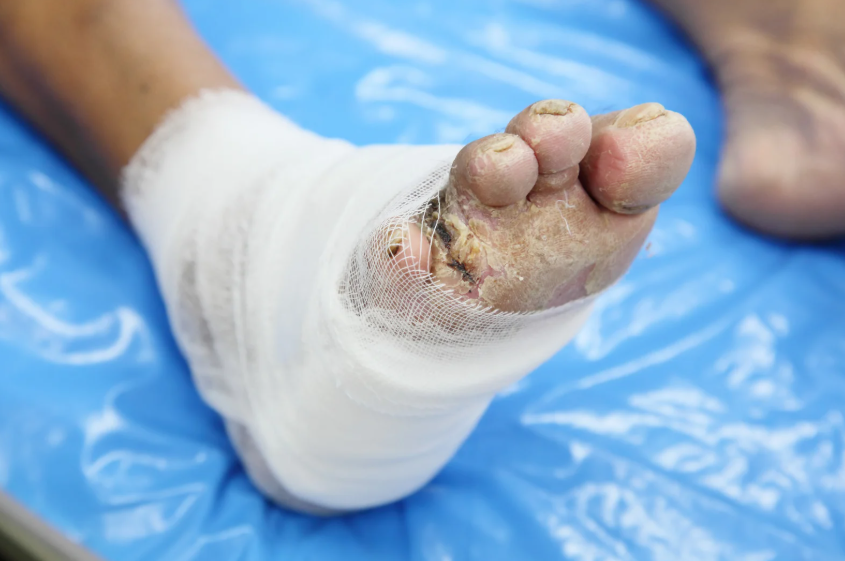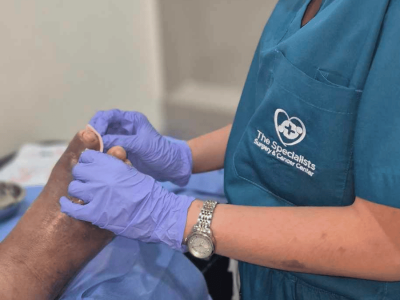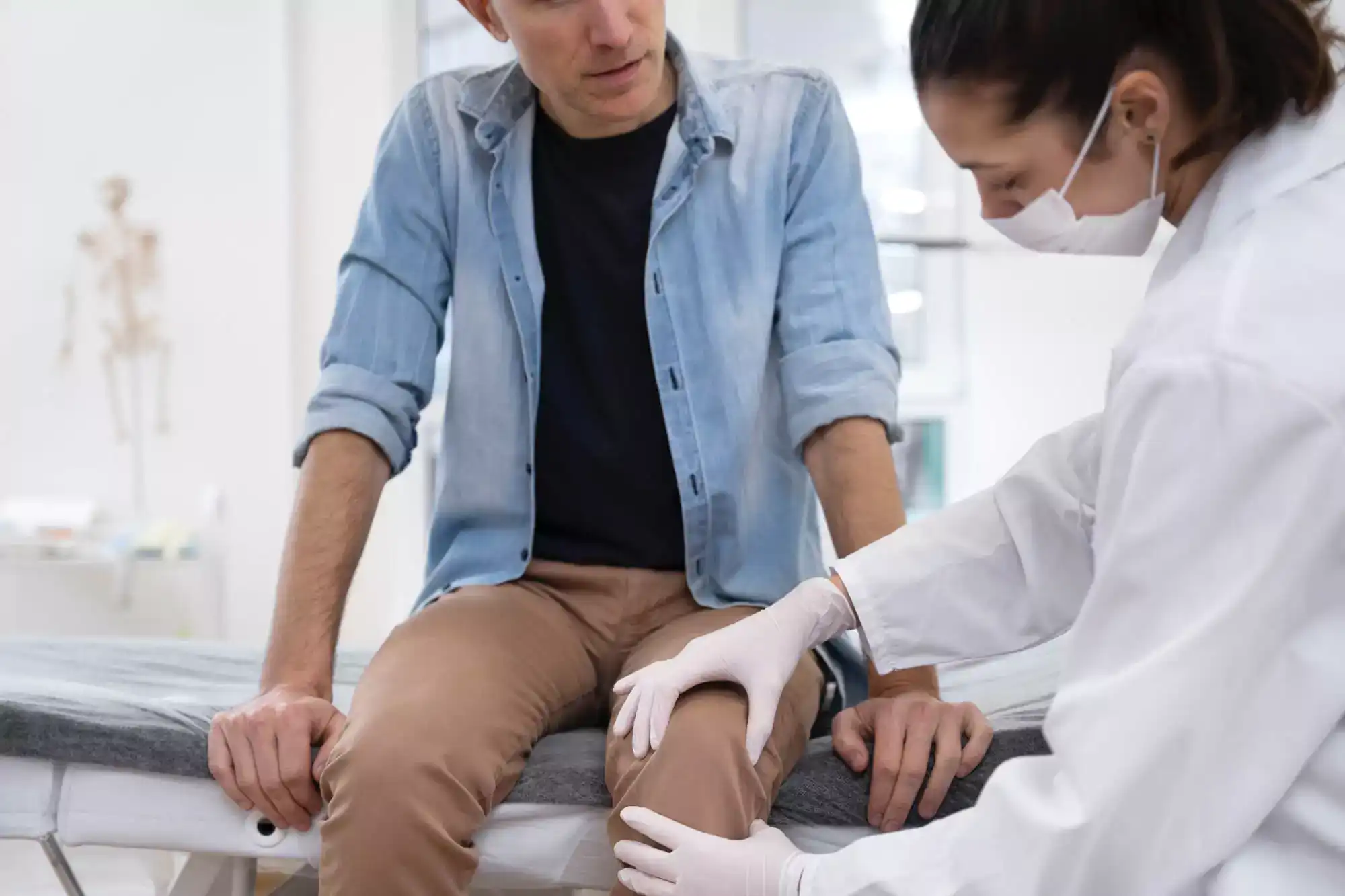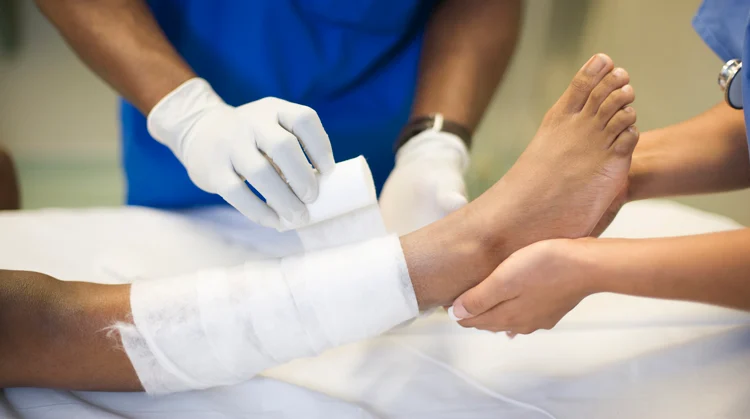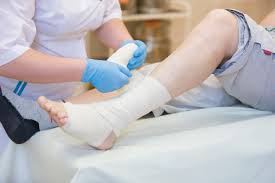Forefoot ulcers are common yet often serious conditions, especially among individuals with diabetes or poor circulation. These ulcers typically develop on the ball of the foot or the toes and can be caused by a variety of factors such as pressure, trauma, or impaired blood flow. When circulation is compromised, the healing process for these ulcers is significantly delayed, making them harder to treat effectively.
Orthopedic treatment for forefoot ulcers plays a crucial role in addressing the underlying mechanical issues and promoting healing. However, without addressing the circulatory problems that often accompany these ulcers, the effectiveness of orthopedic treatment is limited. Circulatory issues, such as peripheral arterial disease (PAD), can reduce blood flow to the affected area, complicating the healing process and leading to poor outcomes if not properly managed. In this article, we’ll explore how circulatory issues affect orthopedic treatment for forefoot ulcers and what patients and healthcare providers need to know to achieve better results.
The Role of Circulation in Wound Healing
Blood flow is essential for wound healing, especially when dealing with foot ulcers. Healthy circulation delivers the necessary oxygen, nutrients, and immune cells to the affected tissue, helping it regenerate. However, when circulation is compromised—whether due to diabetes, vascular disease, or other factors—tissue repair slows down, increasing the risk of infection and chronic ulcers.
In the context of orthopedic treatment for forefoot ulcers, the role of circulation becomes even more important. If the blood flow is insufficient, the bones, skin, and soft tissues in the affected area may not receive the nutrients they need to heal. As a result, even the best orthopedic procedures may not yield the desired outcomes. For example, surgical interventions such as debridement or reconstruction may fail if the ulcer site is not adequately nourished due to poor circulation.
What Causes Circulatory Issues in Forefoot Ulcer Patients?
Several factors contribute to circulatory problems in patients with forefoot ulcers. One of the most common causes is peripheral arterial disease (PAD), which narrows the arteries in the legs, limiting blood flow to the feet. PAD is prevalent among individuals with diabetes, high blood pressure, or those who smoke. In these patients, the reduced blood supply can prevent proper healing, exacerbating the severity of forefoot ulcers and complicating orthopedic treatment for forefoot ulcers.
Another significant cause of circulatory issues is diabetes-related microvascular damage, where the small blood vessels become damaged over time due to prolonged high blood sugar levels. This damage limits blood flow to the feet, resulting in poor healing and a higher risk of infection. Neuropathy, which often accompanies diabetes, further complicates the situation by reducing sensation in the feet. As a result, patients may not notice early signs of ulcers or injuries, leading to delayed intervention and more severe ulcers.
In addition to diabetes, atherosclerosis (hardening of the arteries) and smoking can also contribute to circulatory issues. Both conditions impair the flow of oxygenated blood to the feet, making it even more challenging to treat forefoot ulcers effectively with orthopedic interventions alone.
How Circulatory Issues Complicate Orthopedic Treatment
When circulation is impaired, orthopedic treatment for forefoot ulcers becomes much more complex. Orthopedic interventions, including surgical procedures, may be less effective if the area does not receive enough blood to heal properly. For instance, debridement—the process of removing dead or infected tissue to promote healing—can result in poor outcomes if the blood flow is insufficient. The tissue may fail to regenerate, and the ulcer may persist or worsen.
In some cases, orthopedic surgery may be necessary to correct deformities or to reconstruct the forefoot. However, without proper circulation, bone healing can be delayed or even prevented. This makes post-operative care and monitoring even more critical, as the risk of complications such as infection or non-union of bones increases.
Moreover, circulatory issues can impact the use of orthotics or other pressure-relieving devices. Custom foot orthotics are often used to offload pressure from the ulcer site and help prevent further damage. However, in cases where circulation is compromised, the foot may not respond as well to these devices. Swelling, tissue fragility, and poor skin health can make it difficult to fit orthotics properly, reducing their effectiveness in promoting healing.
Diagnostic Measures Before Orthopedic Interventions
Before proceeding with orthopedic treatment for forefoot ulcers, it is crucial to assess the patient’s circulatory health. Vascular assessments such as the Ankle-Brachial Index (ABI) and Doppler ultrasound are essential in determining the extent of circulatory compromise. These tests help identify whether there is adequate blood flow to the affected foot and whether any underlying vascular conditions, such as PAD, need to be addressed.
In cases where more detailed imaging is necessary, MRI angiography or CT angiograms may be used to visualize the blood vessels and identify blockages or other issues that could impede circulation. A thorough vascular evaluation ensures that any circulatory issues are addressed before orthopedic treatment begins, increasing the chances of successful healing.
Collaborative Treatment Planning: Orthopaedics + Vascular + Wound Care
Because circulatory issues can significantly affect orthopedic treatment for forefoot ulcers, it is essential to take a multidisciplinary approach. Collaborating with vascular surgeons, podiatrists, wound care specialists, and orthopedic surgeons ensures a comprehensive treatment plan that addresses all aspects of the ulcer and its underlying causes.
In some cases, vascular interventions such as angioplasty or bypass surgery may be necessary to restore blood flow before any orthopedic procedures can be performed. Once circulation is improved, orthopedic treatment for forefoot ulcers can be more successful, as the tissue will have the resources it needs to heal. Tec Orthopedics, a leading orthopedic clinic, emphasizes the importance of this collaborative approach and works closely with vascular specialists to ensure that each patient receives the best care possible.
Additionally, wound care specialists can provide treatments such as hyperbaric oxygen therapy or the use of advanced skin substitutes to support the healing process. By addressing both circulatory and orthopedic factors, the patient is more likely to experience a positive outcome.
Treatment Options for Forefoot Ulcers with Circulatory Compromise
Once circulatory issues have been addressed, there are several treatment options available for orthopedic treatment for forefoot ulcers. Surgical procedures such as revascularization or debridement may be employed to remove necrotic tissue and promote healing. However, these procedures must be carefully tailored to each patient, taking into account their circulatory health.
Custom orthotics are often used to offload pressure from the ulcer site, providing relief and preventing further damage. These devices can be particularly helpful for individuals with foot deformities or those who are unable to offload pressure naturally due to neuropathy or other conditions. However, the success of orthotics depends on proper circulation, making vascular health a key factor in determining their effectiveness.
For patients with more severe ulcers, advanced wound care techniques, such as skin grafts or negative pressure wound therapy, may be necessary. These techniques promote tissue growth and help speed up the healing process, especially in cases where traditional methods are not sufficient.
Prevention Strategies and Long-Term Management
Prevention is crucial when managing orthopedic treatment for forefoot ulcers. Regular foot exams and early intervention are essential for individuals at risk of developing foot ulcers, especially those with diabetes or circulatory issues. Tec Orthopedics recommends that patients regularly check their feet for signs of ulcers, calluses, or other abnormalities and seek prompt treatment if any issues arise.
Managing underlying conditions such as diabetes, hypertension, and high cholesterol is essential in preventing circulatory problems. Patients should also adopt healthy lifestyle habits, such as quitting smoking, exercising regularly, and maintaining a healthy diet, to support vascular health.
Proper footwear is another critical aspect of prevention. Shoes should be well-fitted and provide adequate cushioning and support to reduce pressure on the forefoot. Offloading devices and custom orthotics can further help to protect the feet from developing ulcers.
The Interconnected Nature of Circulation and Orthopedic Success
Orthopedic treatment for forefoot ulcers can be highly effective, but it is deeply interconnected with circulatory health. Without addressing underlying circulatory issues, even the most advanced orthopedic interventions may fail to provide lasting relief. A multidisciplinary approach, including collaboration with vascular specialists, podiatrists, and wound care experts, is essential for achieving the best possible outcomes for patients.
By focusing on improving circulation and employing a tailored treatment plan, patients can enhance the chances of successful healing and reduce the risk of complications. For those struggling with forefoot ulcers, seeking early intervention and comprehensive care from trusted providers like Tec Orthopedics can make all the difference in the healing process.

